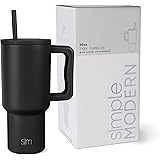The study covered in this summary was published on ResearchSquare.com as a preprint and has not yet been peer reviewed.
Key Takeaways
Secondary injury to brain tissue from ischemic stroke can result from brain tissue edema, inflammation, or neuronal damage, with resulting changes in serum amino acid metabolites.
Analysis of amino acid profiles of convalescent stroke patients and healthy participants revealed significant differences between the two groups. In stroke patients, levels of phosphoserine, glutamic acid (Glu), isoleucine, leucine, phenylalanine, arginine, and proline were increased, and levels of taurine (Tau), cystine, methionine, β-alanine, and histidine were decreased compared with the control group, indicating that amino acids had high diagnostic efficiency.
Glutamate is known to be neurotoxic, and increased levels have been found in stroke patients in previous studies. Taurine is neuroprotective and can modulate the neurotoxic effects of glutamate and mitochondrial disorders. The value of Tau/Glu measured weekly in the study participants increased gradually and correlated with improved prognosis, suggesting that Tau/Glu level can be used as a potential prognostic marker.
Why This Matters
Stroke is the second most common cause of death worldwide and a major cause of disability.
Investigating the metabolic changes that occur with stroke and identifying markers of stroke prognosis can help optimize patient care and aid in healthcare resource allocation.
Study Design
Forty-eight convalescent patients at least 14 days post ischemic stroke were divided into two groups, distinguished by Barthel index (BI) assessment of activities of daily living: a good-prognosis group (BI> 60) and a poor-prognosis group (BI ≤ 60). An equal number of healthy participants were used as controls.
Fasting blood samples were drawn, and serum amino acid values were measured from all participants weekly for a period of 5 weeks. Standard statistical analysis of differences in these parameters between the groups was performed.
Key Results
The authors assert that the value of Tau/Glu in the good-prognosis group increased significantly over the 5-week study period. The value of Tau/Glu in the poor-prognosis group did not show a significant difference during the 5 weeks, and there was a significant difference in the fifth week between the good-prognosis and the poor-prognosis groups.
Furthermore, the researchers state that analysis of the receiver operating characteristic curve comparing Tau/Glu between two subgroups yielded an AUC of 0.964, and the cut-off value was 0.79; therefore, Tau/Glu level can be used as a potential prognosis marker. Convalescent patients with a ratio> 0.79 can be considered to have a good prognosis.
Limitations
The sample size was small, and more participants would help verify findings.
Further studies are needed to investigate the role of Tau/Glu and to seek more biomarkers to aid treatment of stroke patients.
Study Disclosures
No potential conflict of interest was reported by the authors.
The authors did not receive any specific grants from funding agencies.
This is a summary of a preprint research study, “Amino acid metabolism and prognostic markers in ischemic stroke patients,” by Chenxi Zhang and colleagues from Beijing Tiantan Hospital on Research Square provided to you by Medscape. This study has not yet been peer reviewed. The full text of the study can be found on ResearchSquare.com.
Note: This article have been indexed to our site. We do not claim legitimacy, ownership or copyright of any of the content above. To see the article at original source Click Here













